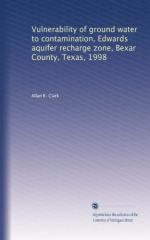|
This section contains 432 words (approx. 2 pages at 300 words per page) |

|
The area in which water enters an aquifer. In a recharge zone surface water or precipitation percolate through relatively porous, unconsolidated, or fractured materials, such as sand, moraine deposits, or cracked basalt, that lie over a water bearing, or aquifer, formation. In some cases recharge occurs where the water bearing formation itself encounters the ground surface and precipitation or surface water seeps directly into the aquifer. Recharge zones most often lie in topographically elevated areas where the water table lies at some depth. Aquifer recharge can also occur locally where streams or lakes, especially temporary ponds, are fed by precipitation and lie above an aquifer. Karst sinkholes also frequently serve as recharge conduits. A recharge zone can extend hundreds of square miles, or it can occupy only a small area, depending upon geology, rainfall, and surface topography over the aquifer. Recharge rates in an aquifer depend...
|
This section contains 432 words (approx. 2 pages at 300 words per page) |

|


